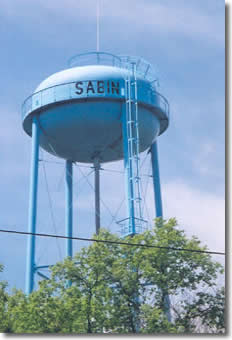Drinking Water Protection
- Drinking Water Protection Home
- About Us
- A-Z Index of Contaminants in Water
- Community Public Water Supply
- Drinking Water Grants and Loans
- Drinking Water Institute
- Drinking Water in Schools and Child Cares
- Drinking Water Revolving Fund
- Laws and Rules
- Noncommunity Public Water Supply
- Source Water Protection
- Water Operator and Certification Training
- Drinking Water Protection Contacts
Related Topics
- Annual Reports
- Drinking Water Risk Communication Toolkit
- Drinking Water Protection External Resources
- Fact Sheets
- Forms
- Invisible Heroes Videos: Minnesota's Drinking Water Providers
- Noncom Notes Newsletter
- Sample Collection Procedures (videos, pictures, written instructions)
- Waterline Newsletter
Related Sites
- 10 States Standards
- Clean Water Fund
- Health Risk Assessment – Guidance Values and Standards for Water
- Minnesota Well Index
- Water and Health
- Wells and Borings
Environmental Health Division
Arsenic Removal Comes to Climax
From the Fall 2005 Waterline
Quarterly Newsletter of the Minnesota Department of Health Public Water Supply Unit, Waterline
A complete list of feature stories can be found on the Waterline webpage.
Railroad tracks run through the Red River Valley between Moorhead and East Grand Forks in northwestern Minnesota. Adjacent to the tracks is U. S. Hwy. 75, with towns every five to seven miles, their proximity determined by the need for water stops for the trains.
Along this same corridor, but below the surface, pockets of arsenic are present in the ground. Communities such as Sabin, Dilworth, Nielsville, Climax, and Fisher have been contending with the problem, as have McIntosh and Fosston, along U. S. Hwy. 2.
The cities have contended with the issue in different ways. Fisher, for example, is hooking up to Marshall-Polk Rural Water System; Nielsville has drilled two new wells, both deep enough to get below the arsenic. The city of Sabin was one of four community water systems in Minnesota to be approved for a demonstration plant for arsenic removal from the U. S. Environmental Protection Agency (EPA). Its story was profiled in the Fall 2004 Waterline. Climax, a city approximately 80 miles north of Sabin, has also constructed a demonstration plant courtesy of the EPA.
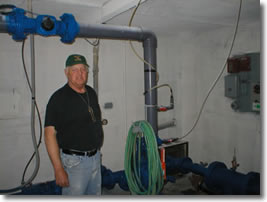 For Climax, the demonstration plant happened after water superintendent Gayhart Gunderson read about the EPA program and contacted Karla Peterson at the Minnesota Department of Health. Peterson had been coordinating the application process that resulted in four Minnesota systems being selected for demonstration plants. (In addition to Sabin and Climax, the city of Stewart and Big Sauk Mobile Home Park were approved by the EPA.) "The EPA was impressed that the state was getting involved with this," explained Gunderson, "which helped with getting the demonstration plant."
For Climax, the demonstration plant happened after water superintendent Gayhart Gunderson read about the EPA program and contacted Karla Peterson at the Minnesota Department of Health. Peterson had been coordinating the application process that resulted in four Minnesota systems being selected for demonstration plants. (In addition to Sabin and Climax, the city of Stewart and Big Sauk Mobile Home Park were approved by the EPA.) "The EPA was impressed that the state was getting involved with this," explained Gunderson, "which helped with getting the demonstration plant."
Under the program, the EPA works with the system to determine the best treatment alternative and then provides the plant for pilot testing. At the end of the testing period, the water system may purchase the plant for $1, an opportunity that Climax took advantage of. The water system is responsible for related infrastructure costs, and Climax had to come up with $100,000 for a new lift station and a structure to house the plant equipment. Gunderson said they raised water bills by an average of $2 per customer per month to cover these costs and adds that they got a bargain since the EPA contribution to the upgrade is $200,000. Gunderson added that they considered a hook-up to Marshall-Polk Rural Water but that this would have resulted in water bills being raised by $6 a month, three times the increase that resulted from putting in the new plant. In addition, Gunderson said that, except for the arsenic issue, their system has been working well for them. "We’ve got good wells," Gunderson said.
The two wells, each 141 feet deep, had been producing water with levels of 36 parts per billion (ppb) of arsenic. Although high, these levels were still well below the maximum contaminant level (MCL) of 50 ppb that had been in effect for many years. In the 1990s, however, the EPA looked closer at the health effects associated with arsenic and eventually lowered the MCL to 10 ppb, with the new standard to take effect in January 2006.
Until the arsenic issue emerged, only chlorine and fluoride were added to the water. Gunderson began taking care of the water on a part-time basis in 1967. Employed by a manufacturer of liquid fertilizer at the time, Gunderson would stop at the wellhouse to check the tower and system on his way to work each morning. Now that he is retired, he is able to spend more time with the water system, which also requires more attention with the addition of the new plant.
 |
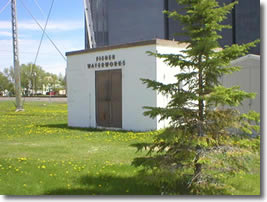 |
|
Communities near Climax have dealt with arsenic issues in different ways, such as new wells in Nielsville (left) and a hookup to Marshall-Polk Rural Water by the city of Fisher. The plant has two wells in a small building; a new structure was added on to house the filters and retention tanks. |
|
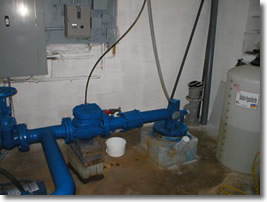 |
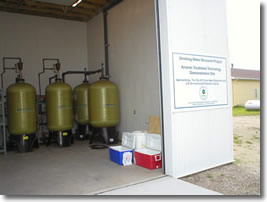 |
The plant consists of two filters, containing Macrolite media made by Kinetico, and two retention tanks, which slow down the flow to allow more time for the iron to oxidize. "The arsenic clings to the iron, so you’re removing the iron, which takes the arsenic out," explains Gunderson.
A problem the system had, however, was the lack of naturally occurring iron. When the plant went on-line in August of 2004, it brought the arsenic levels down to 10 ppb, right on the edge of the new MCL. To enhance the arsenic removal even further, in early 2005 Gunderson began adding iron to the water. He developed a mixture of water and 35 percent ferric chloride; with 34 pounds of the ferric chloride and 392 pounds of water, the mixture brings the ferric chloride down to six percent. Gunderson mixes a new batch every 15 days.
The ferric chloride mixture is added to the water out of the well at the same time as sodium hypochlorite, which replaced the chlorine gas. The flow remains continuous but slows as it passes through the retention tanks. The water then splits and goes into the filters at a pressure of 70 pounds per square inch (psi). An automatic backwash takes place when the pressure differential reaches 20 psi (i. e., when it exits the filters at no more than 50 psi); in addition, a backwash will occur every 48 hours or after 24 hours of service, whichever comes first.
"It’s really simple, the process itself," says Gunderson, noting that the plant has also been effective. With the addition of the iron to facilitate the arsenic removal, the levels of arsenic are down to 6 ppb, well below the new standard that will take effect next January.
Go to > top.
Of interest
Arsenic in Minnesota’s Well Water
